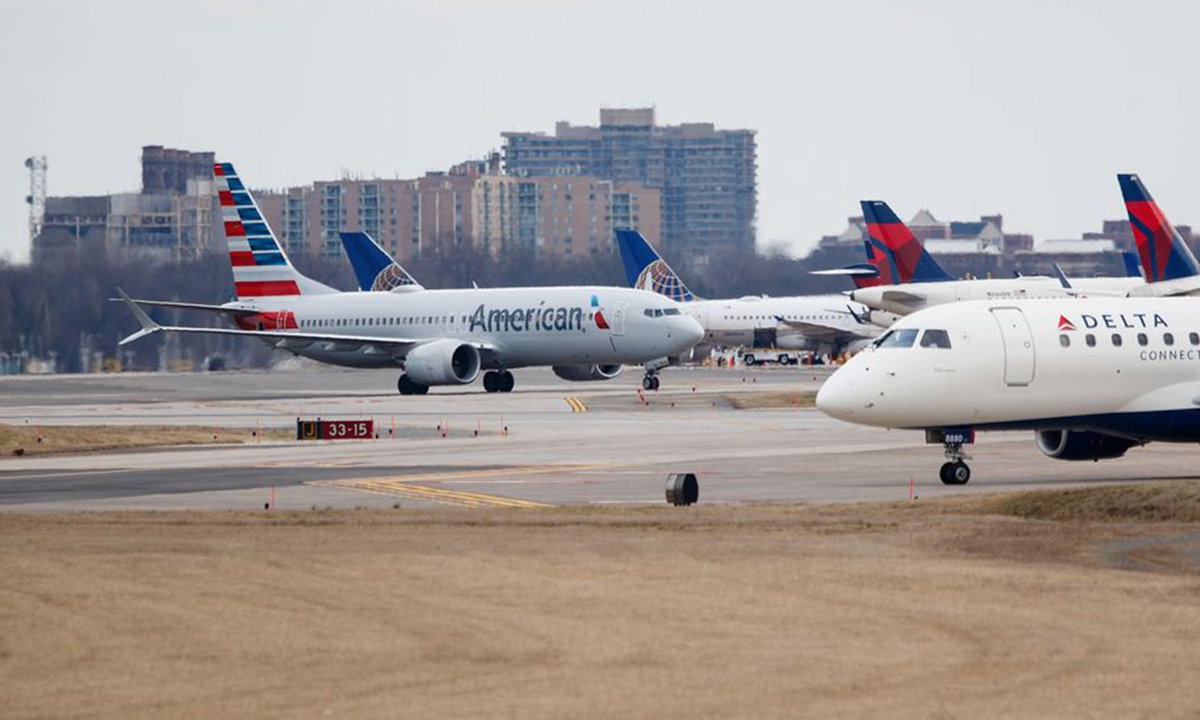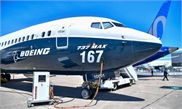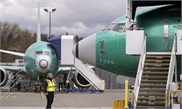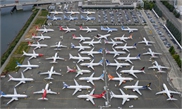European regulator head says passenger jetliner safe to return to service
EASA to lift Boeing 737 Max flight ban
Europe is set to lift its flight ban on the Boeing 737 MAX passenger jetliner in January 2021 after US regulators last week ended a 20-month grounding triggered by two fatal crashes.

The head of the European Union Aviation Safety Agency (EASA) said in remarks aired on Saturday that the 737 MAX was safe to fly after changes to the design of the jet that crashed twice in five months in 2018 and 2019, killing 346 people.
"We wanted to carry out a totally independent analysis of the safety of this aircraft, so we performed our own checks and flight tests," Executive Director Patrick Ky told the Paris Air Forum, an online aviation conference hosted by La Tribune.
"All these studies tell us that the 737 MAX can return to service. We have started to put in place all the measures," he said.
"It is likely that in our case we will adopt the decisions, allowing it to return to service, some time in January [2021]."
EASA's decision is seen as the most important milestone after the FAA's approval since it too carries significant weight in the industry as the watchdog responsible for Airbus.
Officials confirmed a draft EASA directive proposing to end the grounding in Europe will be published next week, followed by a 30-day comment period. After finishing touches, that would lead to an ungrounding decision in January 2021.
How long it takes for flights to resume in Europe depends on pilot training and the amount of time it takes airlines to upgrade software and carry out other actions mandated by the agency.
In the US, commercial flights are scheduled to start on December 29, just under six weeks after the FAA order was published on November 18.
EASA represents the 27 European Union countries plus four other nations including Norway, which has 92 of the aircraft on order. Until December 31, it also represents the UK, which left the EU bloc in January.
The crashes in Indonesia and Ethiopia triggered a slew of investigations faulting Boeing for poor design and the FAA for lax oversight. They also placed tight-knit FAA relations with Boeing under scrutiny.
"It is clear that there were a number of dysfunctions in [FAA] actions and their relations with Boeing," Ky said.
EASA is widely seen as emerging strengthened from the Boeing crisis and some regulators are waiting for its decisions on the MAX rather than immediately following the FAA as in the past.

An American Airlines Boeing 737 Max 8 aircraft from Los Angeles lands at Washington Reagan National Airport in Washington DC, the United States on March 13, 2019. Photo: Xinhua
The head of the European Union Aviation Safety Agency (EASA) said in remarks aired on Saturday that the 737 MAX was safe to fly after changes to the design of the jet that crashed twice in five months in 2018 and 2019, killing 346 people.
"We wanted to carry out a totally independent analysis of the safety of this aircraft, so we performed our own checks and flight tests," Executive Director Patrick Ky told the Paris Air Forum, an online aviation conference hosted by La Tribune.
"All these studies tell us that the 737 MAX can return to service. We have started to put in place all the measures," he said.
"It is likely that in our case we will adopt the decisions, allowing it to return to service, some time in January [2021]."
EASA's decision is seen as the most important milestone after the FAA's approval since it too carries significant weight in the industry as the watchdog responsible for Airbus.
Officials confirmed a draft EASA directive proposing to end the grounding in Europe will be published next week, followed by a 30-day comment period. After finishing touches, that would lead to an ungrounding decision in January 2021.
How long it takes for flights to resume in Europe depends on pilot training and the amount of time it takes airlines to upgrade software and carry out other actions mandated by the agency.
In the US, commercial flights are scheduled to start on December 29, just under six weeks after the FAA order was published on November 18.
EASA represents the 27 European Union countries plus four other nations including Norway, which has 92 of the aircraft on order. Until December 31, it also represents the UK, which left the EU bloc in January.
The crashes in Indonesia and Ethiopia triggered a slew of investigations faulting Boeing for poor design and the FAA for lax oversight. They also placed tight-knit FAA relations with Boeing under scrutiny.
"It is clear that there were a number of dysfunctions in [FAA] actions and their relations with Boeing," Ky said.
EASA is widely seen as emerging strengthened from the Boeing crisis and some regulators are waiting for its decisions on the MAX rather than immediately following the FAA as in the past.



